Top 100, farm system and team-by-team prospect rankings
— -- I see players all year long, as amateurs, in pro ball, at the Futures Game, and in the Arizona Fall League. If I've seen a player, my scouting report becomes the foundation of his capsule and his ranking here. I can't see every player, and sometimes I only see a player once on a day that isn't representative of his abilities, so I supplement all of my content with conversations with various scouts and with at least one executive with every MLB team who has seen his team's prospects enough to discuss them and suggest how I might rank them.
I refer within player capsules and descriptions to grades on player tools and overall forecasts, using the industry standard 20-80 scale, where 50 is major-league average, 60 is 'plus' or well above-average and All-Star level, 80 is a Hall of Famer, and 20 is the bottom of the scale. You'll see a lot of 55s and 60s, but very few 80s because those are rare skills and the grades themselves should be reserved for the best cases, and very few 20s and 30s because someone with a 30 hit tool or 20 command isn't a prospect.
In some cases, I try to give rough odds of certain outcomes, but otherwise refer to things as likely, very likely, or unlikely simply to make the capsules easier to read. If I say likely, I mean better than 50 percent odds; very likely means better than 75 percent; unlikely means below 25 percent.
I write each year's rankings independently. While it may seem like a player made a big jump or suffered a big drop from last year, that's a consequence of the process, not an input. I didn't look at last year's rankings at any point during this year's writing, and a player moving up or down is not per se indication of a change in his ability, but a reflection of what I believe to be his current value and projection relative to all other prospects.
This is by nature a forecasting exercise -- what I think players will become as big leaguers, and when, and how likely those outcomes are. I'm also balancing the two sides of the player-projection coin: probability, how likely is the player to become something more than a replacement-level big leaguer; and ceiling, what is the reasonable best-case scenario for the player if everything works out. If a player has a high ceiling, and I think has a relatively strong probability of reaching it, he's probably in the top 10 or even top five. The remainder of the list is sprinkled with players who have more of one or the other, but I tend to favor prospects with higher ceilings over those with low ceilings but high "floors" -- meaning a reasonable worst-case scenario, assuming the player stays healthy.
"Raw power" refers to the player's physical ability to drive the ball far; "game power" refers to his ability to do it against live pitching, which to some extent incorporates the player's ability to hit and to recognize what pitches he can drive. "Control" refers to a pitcher's ability to throw strikes; "command" refers to his ability to locate his pitches and to make them do what he wants in terms of spin, break, sink, or run. I separate grades for defensive range from arm strength, but if I refer to a player as, for example, a "60 defender," that's referring to his total defensive value, which in the case of a 60 grade would be at least 5 runs saved better than the average for the position.

Prospect rankings: 100-81
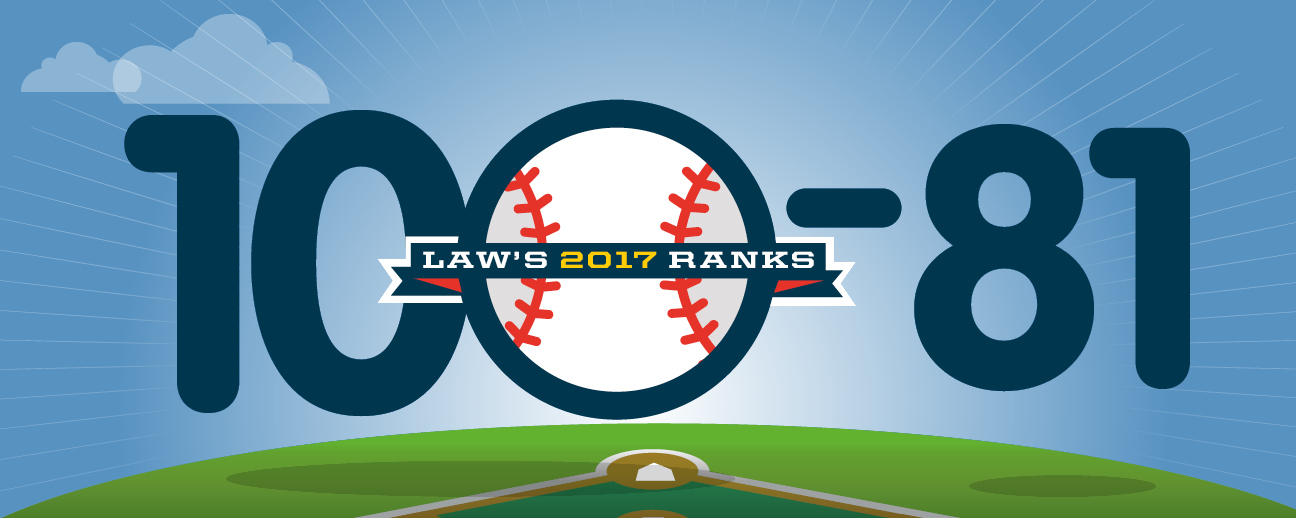
• There are plenty of hard throwers in the first tier of the rankings, including Riley Pint and Dylan Cease, both of whom can reach 100 on the radar gun. Nos. 100-81 ![]()

Prospect rankings: 80-61
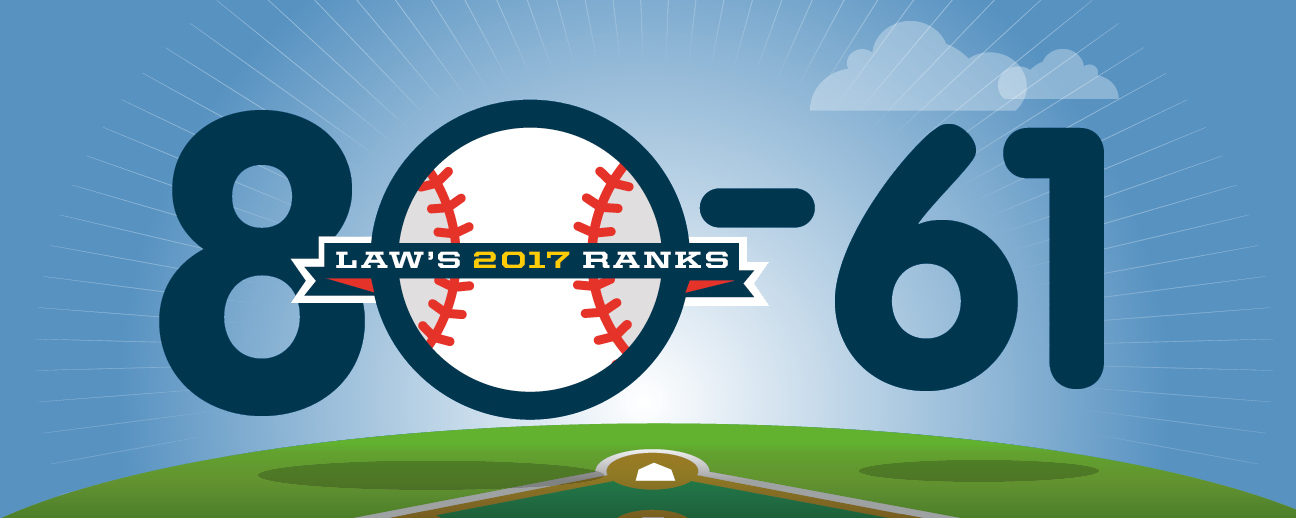
• From a young Cuban with glowing reviews to recently drafted hurlers and some ready for big-league spots, pitchers are kings of the hill in this tier. Nos. 80-61 ![]()

Prospect rankings: 60-41
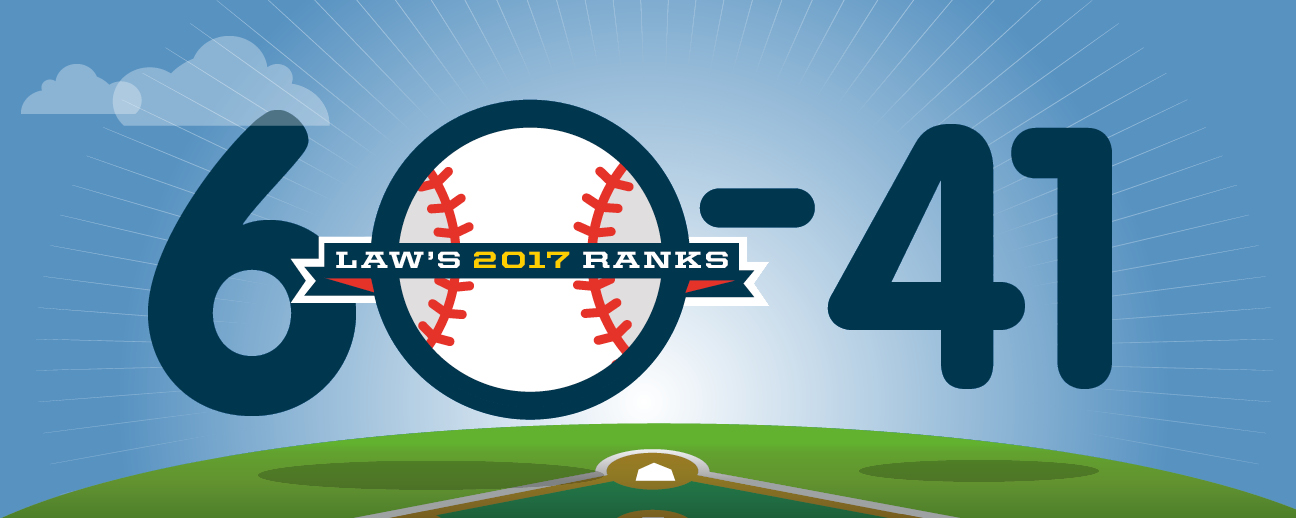
• After pitching dominated the first two tiers, this group features 13 position players. Six are shortstops, including one who was born in (gasp!) 2000. Nos. 60-41 ![]()

Prospect rankings: 40-21
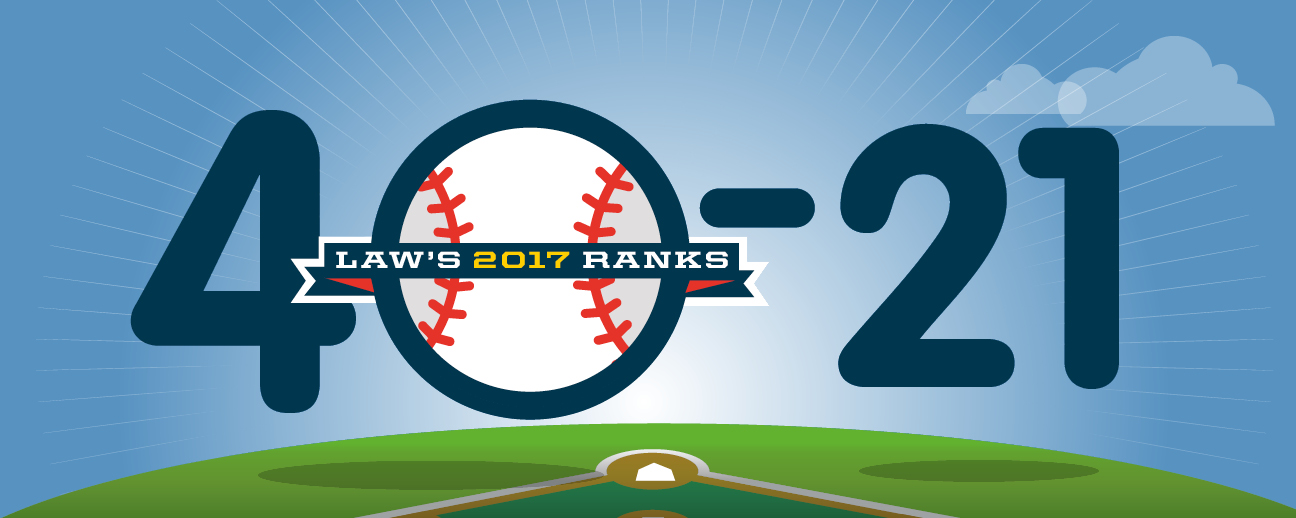
• The players in this group, including nine outfielders and the son of a former major leaguer, may not be in the top tier, but boast major potential. Nos. 40-21 ![]()

Prospect rankings: 20-1
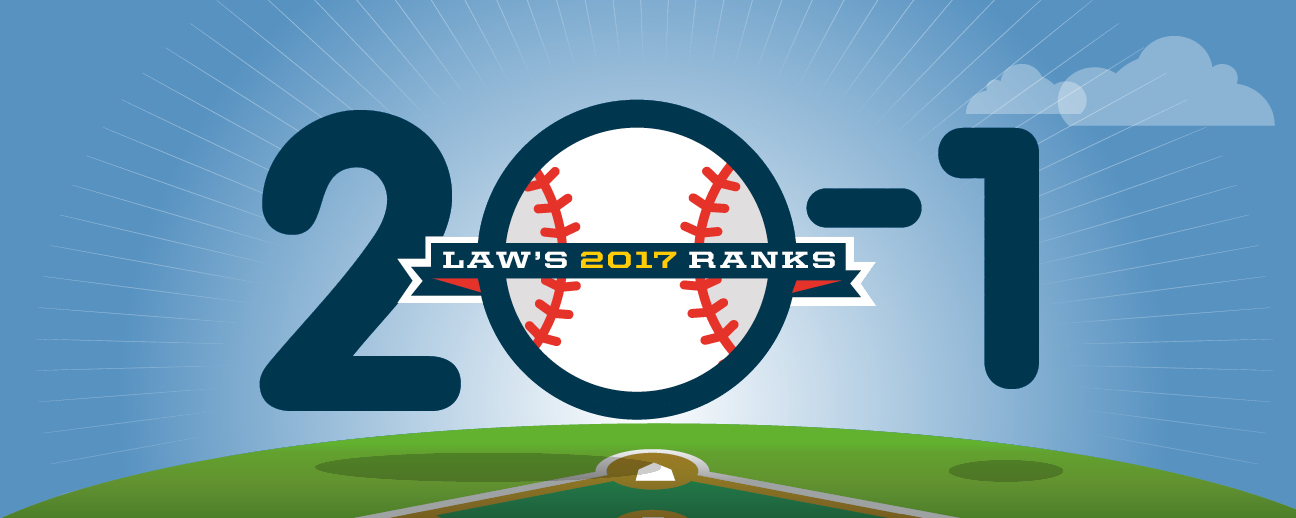
• Shortstops, shortstops and more shortstops. Oh, and some future aces, too. Which stars of tomorrow landed in today's top tier of prospects? Nos. 20-1 ![]()
Schedule

My 2017 farm rankings are based on seeing prospects and talking to scouts, executives and team officials. For the prospect rankings, at least 10 prospects will be ranked, though most teams will have more than 10 players in the minors who project to be more than replacement-level big leaguers -- and every one of those players count.
This means some teams near the top of the list get "credit" for having 20 or more of these types of players, whereas the bottom third may struggle to include 10. Favor is given to prospects with higher upside compared to those with less potential to become stars but with a higher probability of reaching the majors in some role.
As few clubs are able to afford stars on the open market, a team developing its own stars is critical for many franchises. A prospect who projects as a star is currency to acquire current major leaguers. Teams in the top 10 have potential stars and second-tier prospects with future big-league value, while teams in the bottom 10 don't have much of either.

Farm system rankings: The bottom 10

• For these minor league systems, the road back to respectability is tough. The bottom 10 ![]()

Farm system rankings: The middle 10
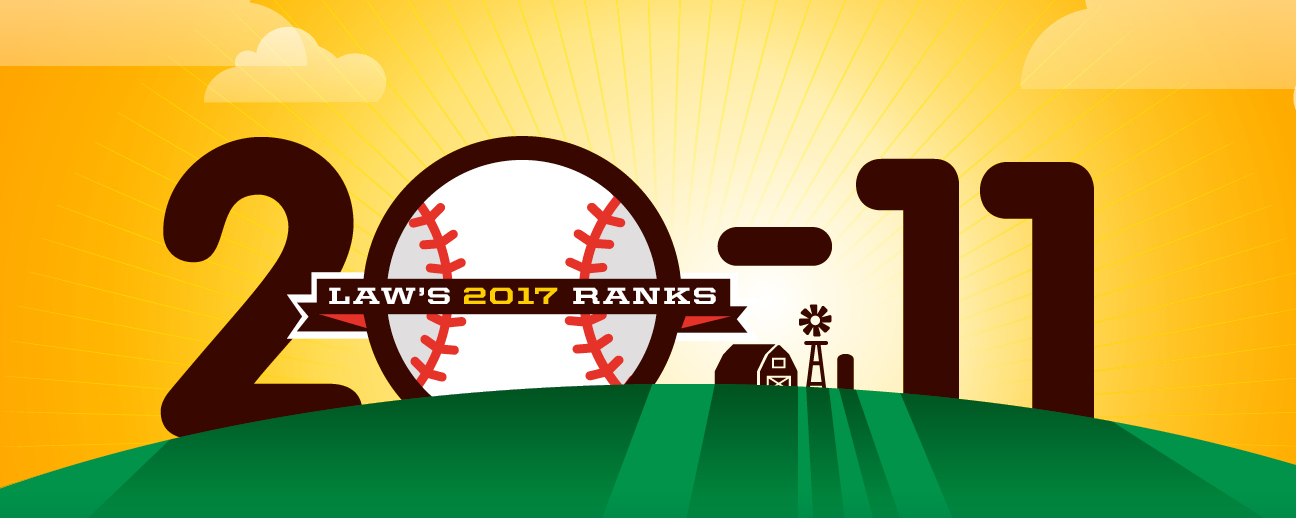
• As the Cubs and a group of playoff contenders in this tier prove, you can win without sacrificing your farm system. The middle 10 ![]()

Farm system rankings: The top 10
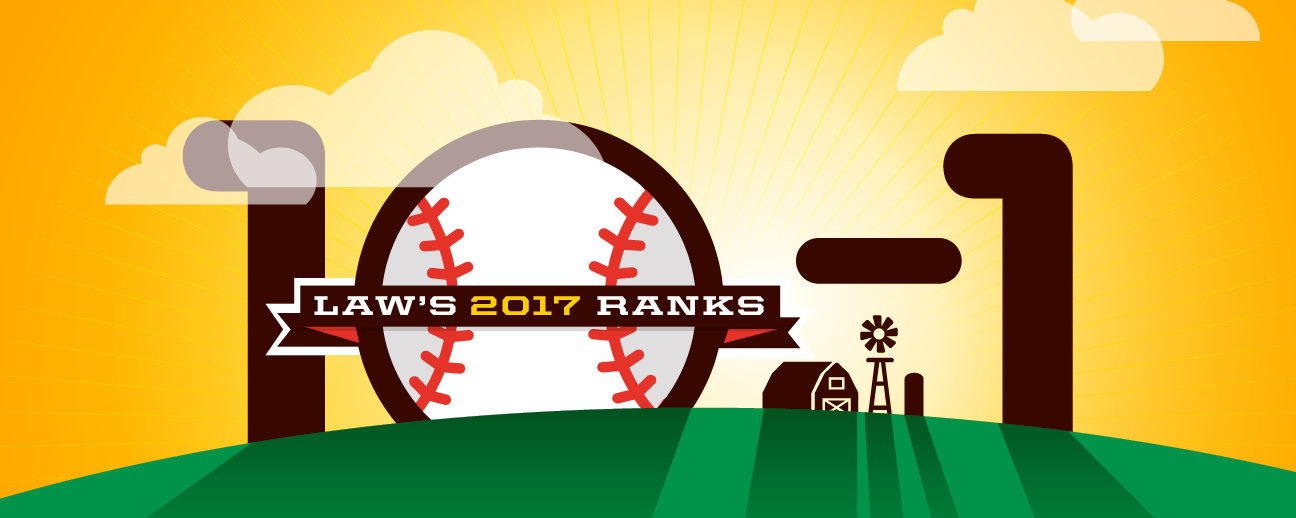
• The Yankees have no weaknesses, the Padres have upside, and the Pirates return their top five from '16, but one system retains its title as MLB's best. The top 10 ![]()

Law's 2016 rankings
Prospect updates ![]()
• Midseason (July 14): Law's Top 50 prospects
• May 24: Top 25 prospects
• Longenhagen: Where Law's top prospects are headed
• March 30: Law's Top 50 prospects
Top 100 prospects ![]()
• Index | Prospect Nos. 1-50 | Prospects 51-00
• 10 players who just missed
• Top 25 impact prospects for 2016
Farm system rankings ![]()
• Braves top rankings of all 30 farm systems
Videos ![]()
• Midseason: Thoughts on Alex Bregman, Willy Adames
• The top prospects
• Sleeper prospects
• Best, worst farm systems
Top 10 prospects by team ![]() • Index (all 30 teams)
• Index (all 30 teams)
Baltimore Orioles (The Orioles article is free to non-Insiders)
Boston Red Sox
New York Yankees
Tampa Bay Rays
Toronto Blue Jays
Chicago White Sox
Cleveland Indians
Detroit Tigers
Kansas City Royals
Minnesota Twins
Houston Astros
Los Angeles Angels
Oakland Athletics
Seattle Mariners
Texas Rangers
Atlanta Braves
Miami Marlins
New York Mets
Philadelphia Phillies
Washington Nationals
Chicago Cubs
Cincinnati Reds
Milwaukee Brewers
Pittsburgh Pirates
St. Louis Cardinals
Arizona Diamondbacks
Colorado Rockies
Los Angeles Dodgers
San Diego Padres
San Francisco Giants
Prospect rankings by position ![]()
• Position rankings, including separate lists for SPs and RPs
More on prospects ![]()
• Szymborski: ZiPS projections top 100 prospect rankings
• Rancel: Top 50 fantasy prospects for 2016